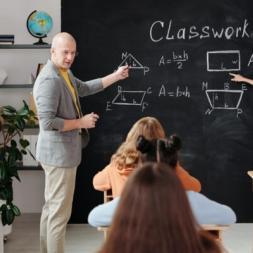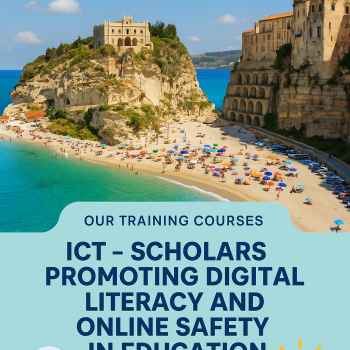
FLIPPED CLASSROOM: METODOLOGIES, OBJECTIVES, AND GOOD PRACTICES
In recent years, reflections in the field of teaching have focused on how to use new technologies at school and on how to make students more involved in a learning process that puts the student at the center. The flipped classroom is a methodology that takes both of these aspects into consideration.
Description
In recent years, reflections in the field of teaching have focused on how to use new technologies at school and on how to make students more involved in a learning process that puts the student at the center. The flipped classroom is a methodology that takes both of these aspects into consideration. A first principle on which this methodology is based is active and collaborative learning through which the student does not passively receive notions, but elaborates them, reflects on them and applies them. The work is carried out mainly in groups, favoring collaboration between students and comparison. A second principle concerns the anticipation of content: the study topics are in fact anticipated through different materials that the student views and studies at home and then already has knowledge of them when setting up classroom work. A third principle is to combine the use of new technologies that allow remote teaching with face-toface teaching. The contents are studied at home, but prepared by the teacher and thus become material for subsequent work in the presence.
Learning objectives
The flipped classroom allows to go beyond the organizations and hierarchical divisions within the class; both teachers and students, in fact, place themselves on the same level and share a common goal: to conduct an analysis of a specific topic to share the knowledge that each of the participants has or has acquired, in order to address it from one point of a broader view and consider aspects that perhaps, from a subjective perspective, had not been taken into consideration or had not been fully acquired. Another non-negligible aspect of this philosophy is the conscious and correct use of technologies. Also in this case, many will say that today’s kids already spend too many hours in front of smartphone or computer screens and that stimulating them to use these means could be counterproductive as it would mean, in a certain sense, almost instigating students to get distracted. In fact, however, if it is true that the network and new technologies are a vast area where you can find a vastness of material and, why not, of distractions, it is also true that, if the session has been correctly planned by the teacher and it is not simply used as a “hole stage” activity in the event that you do not want to take a lesson, the teacher will be able to direct students to sources, sites and materials suited to their knowledge, appropriate to the context and captivating. For example, videos and multimedia content can be a valid alternative to the frontal explanation. They are, in fact, more captivating and stimulating for children and can also represent a more usable source of information than books or notes for children with LD who would therefore have the opportunity to participate more actively in the proposed activities.
Methodology & assessment
Materials, digital tools & other learning resources
All the materials will be provided by the teacher
Certification details
Certification of attendance compliant to the Erasmus+ regulation.
Pricing, packages and other information
-
Price:450Euro
-
Course package content:
Course Package – Included and Excluded Costs
The course package includes the following:
- Full participation in the training course
- Educational materials and digital resources provided during the sessions
- Access to all planned educational visits and cultural activities related to the course content
Please note that the following are not included in the course fee:
Accommodation
- Meals (breakfast, lunch, dinner)
- Local and international transport
- Airport transfers
-
Additional information:Description of the services and activities included in the course package (such as accommodation, meals, transport) or available at extra cost.
-
Cancellation & changes:
Participants may cancel their registration up to 30 days before the course start date with a full refund, excluding bank fees. Cancellations received less than 30 days prior to the course are non-refundable. However, a replacement participant from the same organization may be sent without additional cost.
Changes to participation dates or course editions are possible, subject to availability, if requested at least 15 days prior to the course start.
In the case of unforeseen circumstances or force
-
Additional information:The options and conditions for change and cancellation, and the policy in case of unforeseen circumstances (force majeure).
Additional information
-
Language:English
-
Target audience ISCED:Primary education (ISCED 1)Lower secondary education (ISCED 2)Upper secondary education (ISCED 3)
-
Target audience type:TeacherHead Teacher / PrincipalTeacher Educator
-
Learning time:15-20 hours
Upcoming sessions
Past sessions
More courses by this organiser

HOW TO PREVENT AND MANAGE ESL – EARLY SCHOOL LEAVING



